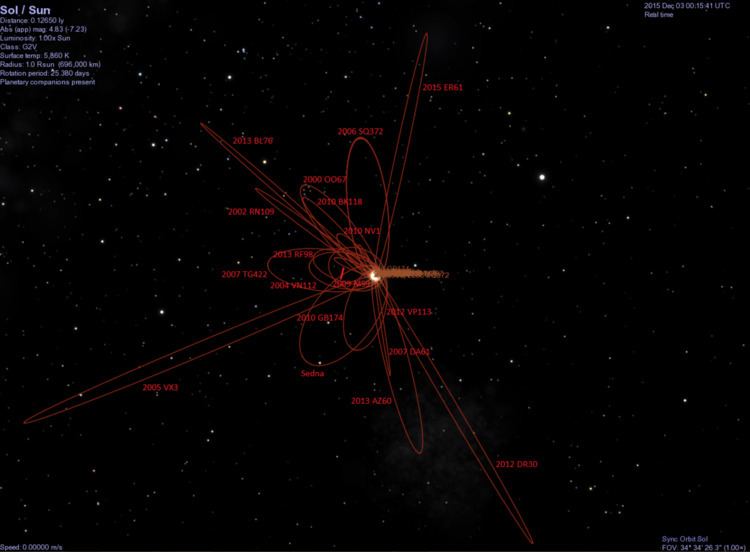Discovered by Mt. Lemmon Survey Observation arc 81 days Discovered 1 November 2005 Absolute magnitude 14.1 Apparent magnitude 28 | Discovery date 2005-11-01 Perihelion 4.1316 AU (618.08 Gm) Inclination 112.389° Asteroid group Damocloid | |
 | ||
Minor planet category damocloiddistant objecttrans-Neptunian objectJupiter crosserSaturn crosserUranus crosserNeptune crosser Aphelion 3080 ±643 AU (heliocentric)~2049 AU (barycentric) Similar 2012 DR30, 2007 TG422, 2008 ST291 | ||
2005 vx3
2005 VX3 is the minor planet with the 3rd largest known heliocentric semi-major axis and aphelion. Additionally its perihelion lies within the orbit of Jupiter, which means it also has the largest orbital eccentricity of any known minor planet. 2005 VX3 has a barycentric semi-major axis of ~1026 AU. 2014 FE72 and 2012 DR30 have a larger barycentric semi-major axis. The epoch of January 2016 was when 2005 VX3 had its largest heliocentric semi-major axis.
2005 VX3 has a short observation arc of 81 days and does not have a well constrained orbit. It has not been observed since January 2006, when it came to perihelion, 4.1 AU from the Sun. It may be a dormant comet that has not been seen outgassing. In the past it may have made closer approaches to the Sun that could have removed most near-surface volatiles. The current orbit crosses the ecliptic just inside Jupiter's orbit and has a Jupiter-MOID of 0.8 AU.
As of 2017, it has an apparent magnitude of ~28 and is 24 AU from the Sun. It comes to opposition in mid-June. It would require one of the largest telescopes in the world for any more follow-up observations.
